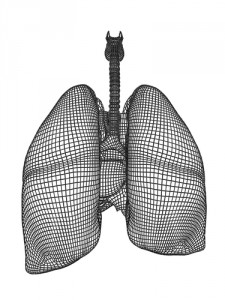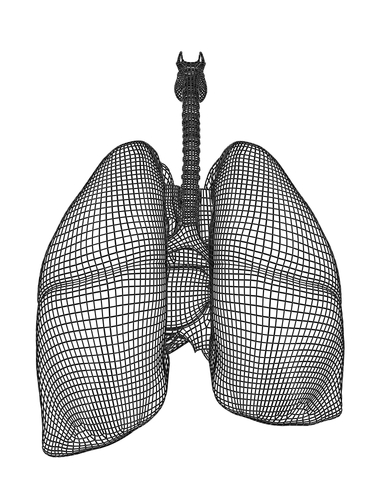 A group of researchers from the Regenerative Technologies For Oncology project (Fraunhofer Institute of Interfacial Engineering and Biotechnology IGB), along with the Department of Bioninformatics at the University of Würzburg, developed a 3D lung to investigate the human body’s reactions to cancer cells, drugs, and therapies.
A group of researchers from the Regenerative Technologies For Oncology project (Fraunhofer Institute of Interfacial Engineering and Biotechnology IGB), along with the Department of Bioninformatics at the University of Würzburg, developed a 3D lung to investigate the human body’s reactions to cancer cells, drugs, and therapies.
Smaller than a sugar cube, this device may allow the discovery of improved, individualized therapeutics for lung cancer patients and, in the long-term, it may help scientists to prevent its metastases.
The artificial lung has a bioreactor that allows it to recreate the functions and movements of a real lung, like regulated breathing movements (faster or deeper) or pumping, simulating the way the body delivers blood to the lungs. The researchers were also able to delineate the lung tissue, recreating what enables it to experience the same resistance in their model as it would in clinics. Together with the Bioinformatics Department, the team also worked on creating computer simulation models, so that the test could process different patient models.
Using these findings, researchers plan to test the device’s potential in helping evaluate new therapeutic agents, keeping in mind that in the long-term they might also be able to create an individual model lung for every specific patient.
For patients, this would mean not only the most accurate system concerning successful treatment options and medications, but also the possibility of preventing metastatic growth.
“For the first time, our 3D lung tissue makes it possible to perform metastases analysis,” said Dr. Heike Walles, the leading voice of the research group. Tumor cells generate different markers when they want to travel through the body. With this 3D device, scientists want to know exactly how this change happens. Once they understand this, they’ll be able to prevent the early formation of metastases.
In Walles’ opinion, this 3D lung is an important step in cancer research, both in metastases prevention and in the discovery of effective drug treatments, since currently drug tests are developed on animals, which most of the time eventually fails in treating humans. “Animal models may be the best we have at the moment, but all the same, 75 percent of the drugs deemed beneficial when tested on animals fail when used to treat humans,” he explained.

